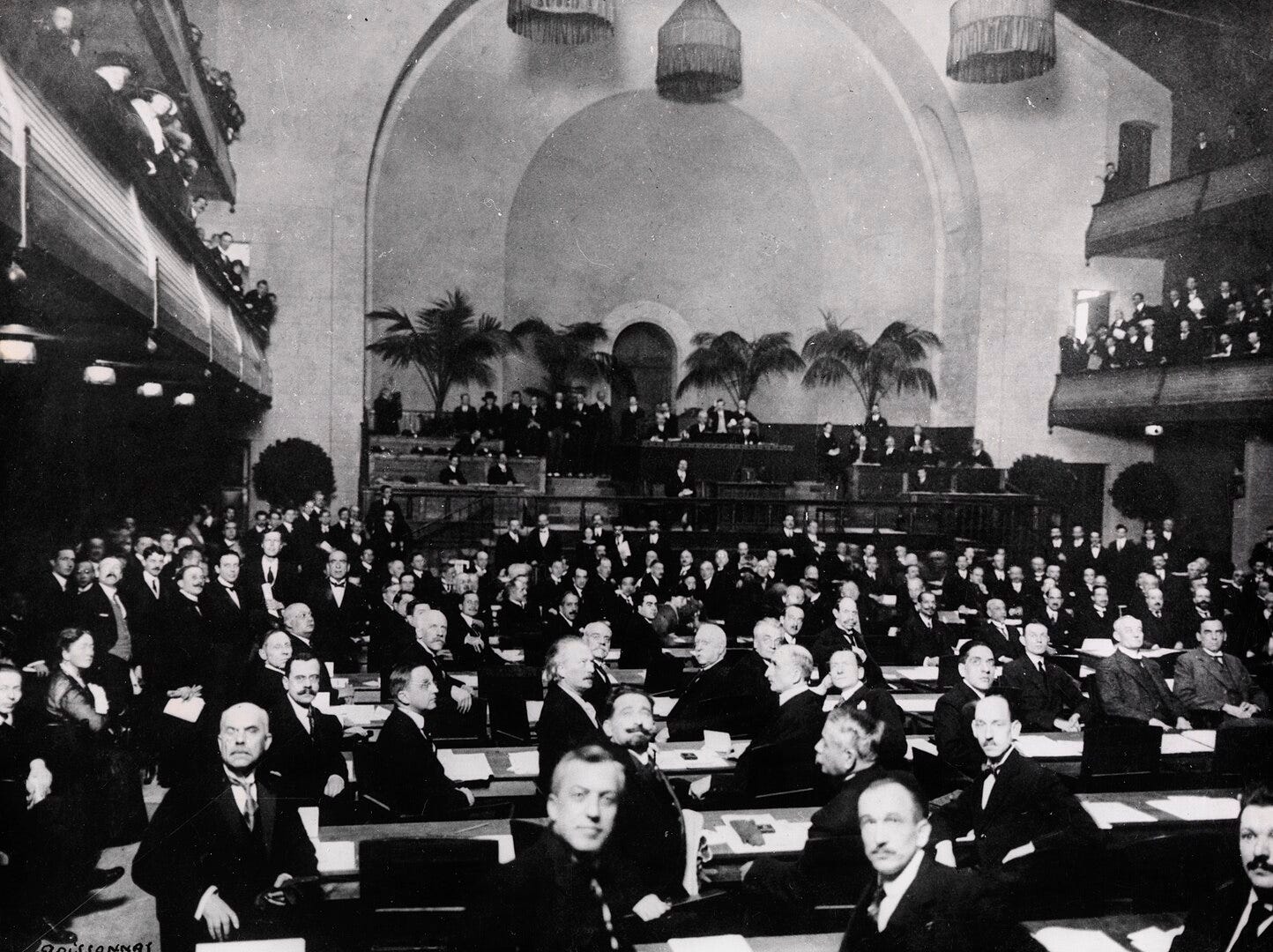A Technocratic Vision of Peace: The Pan-Europe Movement
Alongside Tolstoy's religious pacifism, the 1920s also gave birth to elitist technocratic and utopian visions of peaceful governance. How did they respond to the rise of fascism?
Hello folks, Derek here with the sixth entry in Daniel Steinmetz-Jenkins’ special Foreign Exchanges series on the anti-war/non-violence movement as a political tradition. As I mentioned in the preface to his introductory piece, this series is being offered as a special for paid FX subscribers. I hope those who are interested in the piece will consider subscribing to FX to support Daniel’s work as well as everything else that goes on here. Please subscribe today:
The unprecedented violence of World War I, and the emergence of anti-imperial movements in its wake, made the 1920s one of the most fecund decades of the twentieth century for antiwar and nonviolent thought. This decade witnessed a rich diversity of moral, spiritual and religious visions of pacifism—as for instance, represented by the thought of such anti-war luminaries as Gandhi, Roman Rolland, and Jane Addams, all of whom were influenced by the religious pacifism of Tolstoy as discussed in my last entry. However, the 1920s also gave birth to elitist technocratic and utopian visions of peaceful governance that also had considerable influence, especially in Europe.
This was no doubt a time of excitement for advocates of European internationalism: the League of Nations was proving to be a facilitator of European unity; the Locarno Pact signed on December 1, 1925, treated Germany and France as equals; Foreign Minister Aristide Briand's involvement with the League improved Franco-German relations, and Germany received membership in the League in 1926. Many economists, diplomats and statesmen, in fact, hoped that the League of Nations would eventually give birth in Europe to a federation that would embody Kant’s notion of “perpetual peace.”

These advocates of a European Union argued that in order to prevent another World War, European nation-states and their respected political parties must accept and adjust to the realities of their economic and industrial interdependence. Economic interdependence, for advocates of the Pan-Europe movement, called into question the salience of political divisions between Left and Right, which they associated with the fading nineteenth-century era of autonomous nation-states. What was needed, advocates of the Pan-Europe movement argued, were technological experts who could rationally coordinate the economies of Europe’s myriad nation-states. Technocratic governance, rather than the violent patriotism of politicians representing their respective nation-states, would, in turn, allow for the peaceful administration of Europe. This vision of peace is well illustrated by leading thinkers of the Pan-Europe movement like Count Richard von Coudenhove-Kalergi, who was the founder of the movement and Francis Delaisi, the General Secretary of its French branch.


